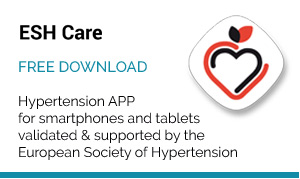Hypertension 2008
Concern over expanding waistlines is more than just talk – as prevalence of overall obesity is on the rise, so too is the prevalence of abdominal obesity. In the United States alone, more than half of all adults exhibited abdominal obesity in 2003-04. This specific type of obesity (as opposed to general obesity) is more than an issue of personal appearance: greater abdominal adiposity is strongly associated with insulin resistance, dyslipidemia, and systemic inflammation.
Recently, C. Zhang and colleagues evaluated data based on 44,636 women enrolled in the Nurses’ Health Study. Measurements of abdominal obesity were strongly and positively associated with all-cause mortality, cardiovascular disease (CVD) mortality, and cancer deaths independent of body mass index (BMI). Even among normal weight women, elevated waist circumference was associated with significantly increased CVD mortality.
All over the world, public health experts are warning of the dire consequences associated with increasing rates of obesity. In a sample of 907 men who had participated in the Quebec Health Study, 19% had both an elevated waist circumference and high triglycerides. While these men did not have type 2 diabetes, they displayed a metabolic risk profile very similar to males with diabetes who had participated in the same study.
Using data from more than 60,000 men and women, Bruno Pannier, MD, and colleagues at Investigations Préventives et Cliniques, Paris (France), found specific components of metabolic syndrome that were significantly associated with much higher mortality: elevated waist circumference and elevated glucose combined with either elevated blood pressure (BP) or elevated triglycerides. In this large, middle-aged, French population, the presence of metabolic syndrome increased all-cause deaths similarly in patients with normal BP and those with hypertension.
At Hypertension 2008, Pannier et al. presented the results of a study seeking to determine whether increased waist circumference alone influences all-cause mortality when analyzed by BP status. The study included 43,691 men and 23,475 women older than 45 years who had a standard check-up at their center between January 1999 and December 2004. Patients were followed for an average of 4.7 years.
The researchers used the ESH/ESC 2007 classifications for elevated waist circumference (>102 cm in men and >88 cm in women) and BP, categorizing hypertensives as those with a systolic BP >/=140 mm Hg and/or diastolic BP >/= 90 mm Hg. While 63.4% of patients were normotensive, more than one-quarter (26.3%) met the threshold for classification as hypertensive; this latter group had the greatest prevalence of increased waist circumference amongst all participants. Moreover, as a percentage of each population, all-cause deaths were doubled in the hypertensive group compared to participants who were normotensive or had high-normal BP.
In calculating the harzard ratio (HR) of risk for all-cause mortality, Pannier et al. determined that compared to the normotensive group, individuals with high-normal BP were not at increased risk, but the hypertensive patients were (HR 1.4). The same was true for those patients with an elevated waist circumference versus those without any such elevation (HR 1.4). When the two elements of waist circumference and BP status were combined, only those with hypertension were at increased risk for all-cause mortality (HR 1.7), and the interaction between the two variables was significant (p < 0.05).
In his presentation at Hypertension 2008, Dr. Pannier pointed out that while the impact of an elevated waist circumference differed significantly depending on BP status, greater waist circumference was associated with significantly more risk in those patients who were hypertensive.
References:
- Li C, Ford ES, McGuire LC, Mokdad AH. Increasing trends in waist circumference and abdominal obesity among US adults. Obesity (Silver Spring) 2007;15:216-24.
- Berg AH, Scherer PE. Adipose tissue, inflammation, and cardiovascular disease. Circ Res 2005;96:939-49.
- Calle EE, Kaaks R. Overweight, obesity and cancer: epidemiological evidence and proposed mechanisms. Nat Rev Cancer 2004;4:579-91.
- Zhang C, Rexrode KM, van Dam RM, Li TY, Hu FB. Abdominal obesity and the risk of all-cause, cardiovascular, and cancer mortality: sixteen years of follow-up in US women. Circulation 2008;117:1658-67.
- Lemieux I, Alméras N, Mauriège P, et al. Prevalence of ‘hypertriglyceridemic waist’ in men who participated in the Quebec Health Survey: association with atherogenic and diabetogenic metabolic risk factors. Can J Cardiol 2002;18:725-32.
- Guize L, Thomas F, Pannier B, Bean K, Jego B, Benetos A. All-cause mortality associated with specific combinations of the metabolic syndrome according to recent definitions. Diabetes Care 2007;30:2381-7.
- Pannier B, Thomas F, Bean K, Jégo B, Benetos A, Guize L. The metabolic syndrome: similar deleterious impact on all-cause mortality in hypertensive and normotensive subjects. J Hypertens 2008;26:1223-8.






